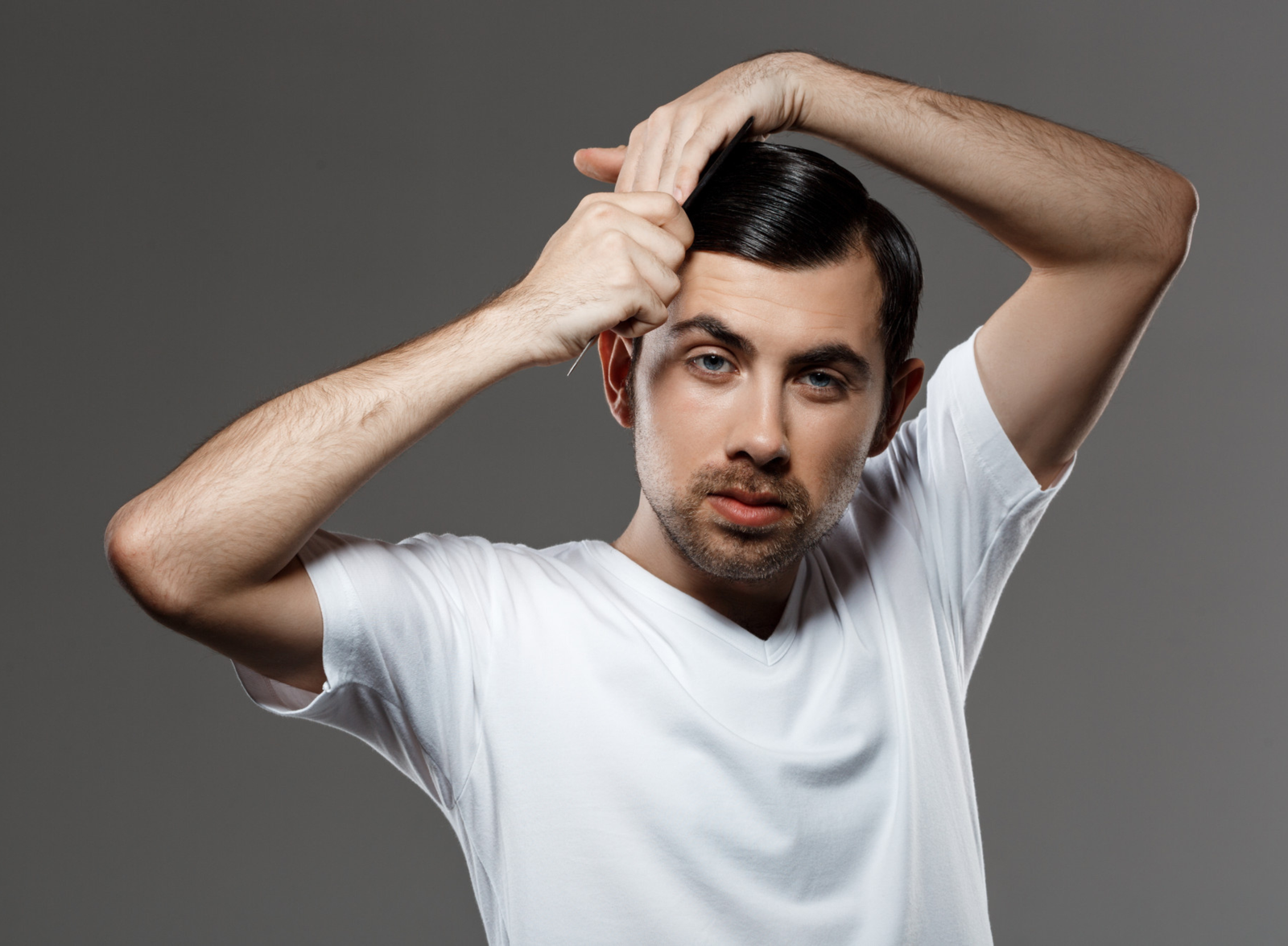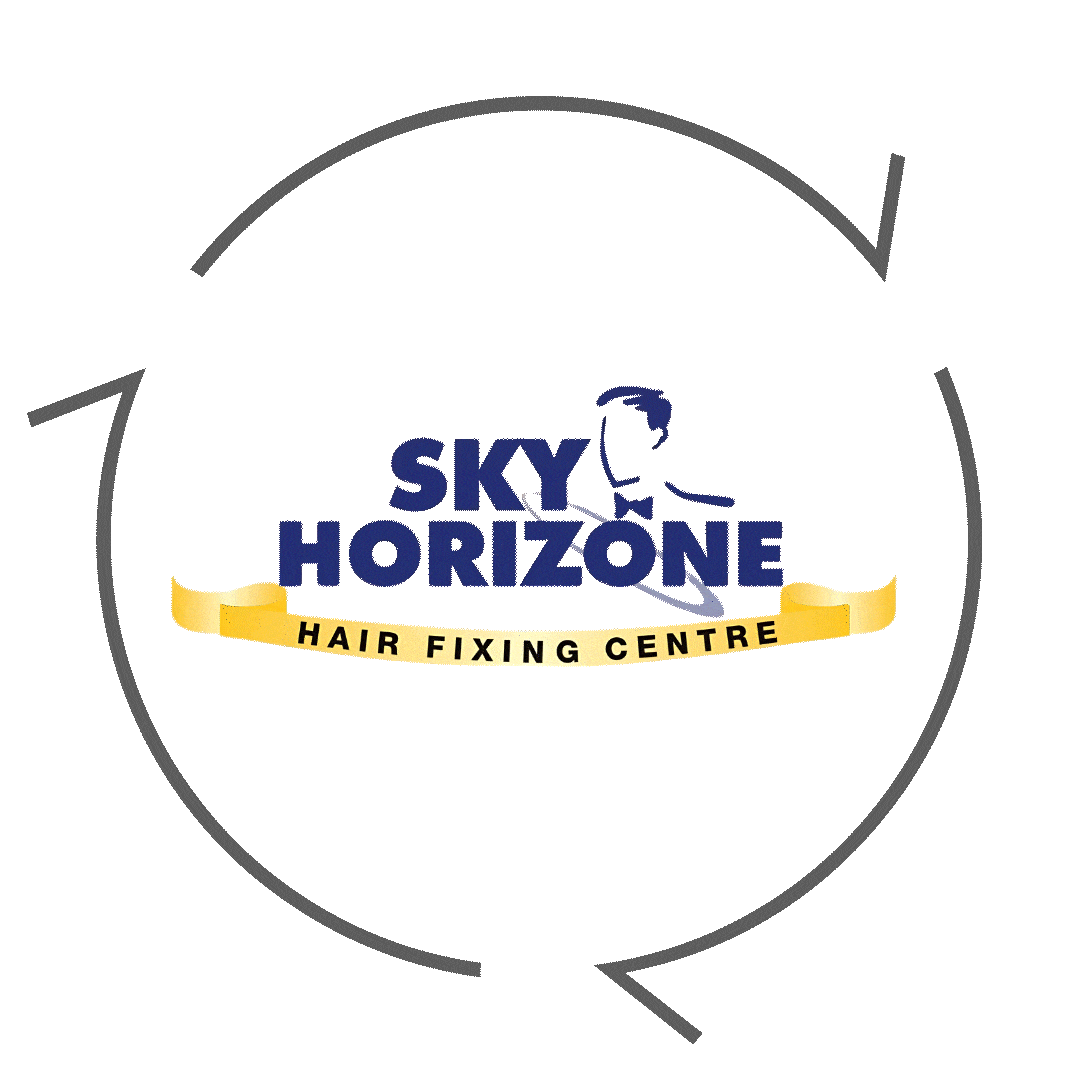

It can be complicated to design your own hair system, but one approach to make it easier is to concentrate on lifestyle aspects. Asking yourself some questions that are simple to answer will provide us with important information. Before deciding on base materials and placing an order for a hair system, each person who wears hair should think about the following questions.
1. How do you intend on attaching the hair system?
When it comes to attaching a hair system, the method you choose depends on a few factors, like how long you plan to wear the system, the base material, your lifestyle, and personal preferences.
- Tape (Adhesive Strips):The hair system is pressed onto your scalp after special adhesive tapes created for hair systems have been attached to the base’s perimeter.
- Bonding Glue:Special medical-grade or wig glue is applied to the base of the hair system or the scalp, and the system is pressed into place.
- Clips / Combs:Small clips or combs are sewn into the base of the hair system. You attach the system by clipping it onto your natural hair or the scalp.
- Sewn-In (Weave or Braided Attachment):The hair system is sewn directly into braids or natural hair, often used for custom-made hairpieces.
The method you choose largely depends on how often you want to wear the system, the level of security you need, your budget, and your comfort with adhesives or attachment tools.
2. How breathable and comfortable is the base?
The base’s comfort and breathability are significant factors when choosing a hair system for prolonged use. Different materials offer various levels of fit, flexibility, and airflow.
- Lace bases: Known to be most breathable, allowing for maximum airflow, making them ideal for warm climates or long wear.
- Polyurethane bases: They provide a secure, realistic scalp look but can be less breathable, which may cause sweating or discomfort in hot conditions.
- Silicone bases: smooth and comfortable, but they tend to trap heat, making them less breathable than lace or polyurethane.
- Mesh or monofilament:these offer good breathability while providing structure, though they may not be as flexible as lace.
For comfort, the thinner and more flexible the material, the better it will conform to your scalp, but it’s a trade-off between breathability and durability.
3. How secure is the base?
A hair system base must be secure to ensure its functionality during everyday activities. A comparison of the stability of various base materials is provided below:
- Lace bases: Flexible, but may require adhesives for better hold during active movement.
- Leatherette bases: Provide a firmer, more stable fit, often staying secure without the need for adhesives.
- Polysiloxanes bases: Offer strong hold and stability, maintaining position even with regular use.
- Sewn-in or micro-link: The most secure option, offering long-lasting attachment with minimal risk of shifting.
4. Does the base allow for proper ventilation?
Proper ventilation is crucial when selecting a hair system base, especially for those who wear it for long hours or in warmer climates. A breathable base helps prevent heat buildup, sweating, and potential scalp irritation, keeping you comfortable throughout the day.
- Lace bases: Highly breathable and allow maximum ventilation, making them ideal for hot climates or extended wear.
- Polyurethane bases: Less breathable, which may lead to discomfort or sweating, especially in warm conditions.
- Silicone bases: Similar to polyurethane, silicone offers limited ventilation, which could cause heat buildup.
- Mesh or monofilament bases: Provide a balance between structure and ventilation, allowing some airflow without compromising the fit.
Lace bases are the best for ventilation, while polyurethane and silicone offer less airflow, potentially leading to discomfort. Mesh bases offer a middle ground.
5. What type of environment do you work in?
The right hair system base depends on factors like climate, activity level, and duration of wear, as these affect comfort and durability. Understanding your environment helps ensure your system stays secure, breathable, and comfortable throughout the day.
- Warm and humid:These conditions demand the use of a breathable base such as lace or mesh, especially if you live in a sweltering climate or work outdoors. They allow air to circulate, which helps to reduce sweat and pain.
- Cold & Dry: In cooler, drier environments, you can get away with bases like polyurethane or silicone, which offer more secure fits and protection from the elements, though they can trap heat.
- Active or High-Movement Environments: If your job involves a lot of physical activity, sports, or exercise, select a base that remains stable while you’re moving. The most effective approaches for this are polyurethane and sewing.
- Professional/Office Settings: For a polished, secure look that lasts all day, a lace base or bonded method could work well, offering both comfort and a natural appearance.
6. How often do you want to remove and reattach?
The frequency of removing and reattaching your hair system depends on several factors, including the type of adhesive used, your lifestyle, and scalp health.
- Tape: Tape should often be changed every one to two weeks. Users who are physically active or perspire a lot may choose to reapply and remove it every four to five days.
- Glue:The duration of glue can vary from two to four weeks depending on the variety. Frequent removal and reattachment may be necessary for those with oily scalps or high levels of physical activity.
- Bonding agents: These can provide a strong hold for three to six weeks, but regular maintenance is recommended to ensure scalp health and comfort.
- Personal preference: Some individuals prefer to remove and reattach their hair system weekly to maintain a fresh appearance and ensure cleanliness.
It’s important to keep an eye out for any indications of soreness or irritation on your scalp. The frequency of removal and reattachment should be adjusted if you experience redness, irritation, or other problems. Frequent care develops a healthy scalp in addition to extending the longevity of your hair system.
Conclusion
In 2025, choosing the best hair system basis is a complex choice that depends on individual demands, lifestyle choices, and preferences. You may make an informed decision that fits with your daily schedule and aesthetic objectives by answering the six important questions above, which range from attachment styles and maintenance frequency to environmental factors and preferred comfort levels.

